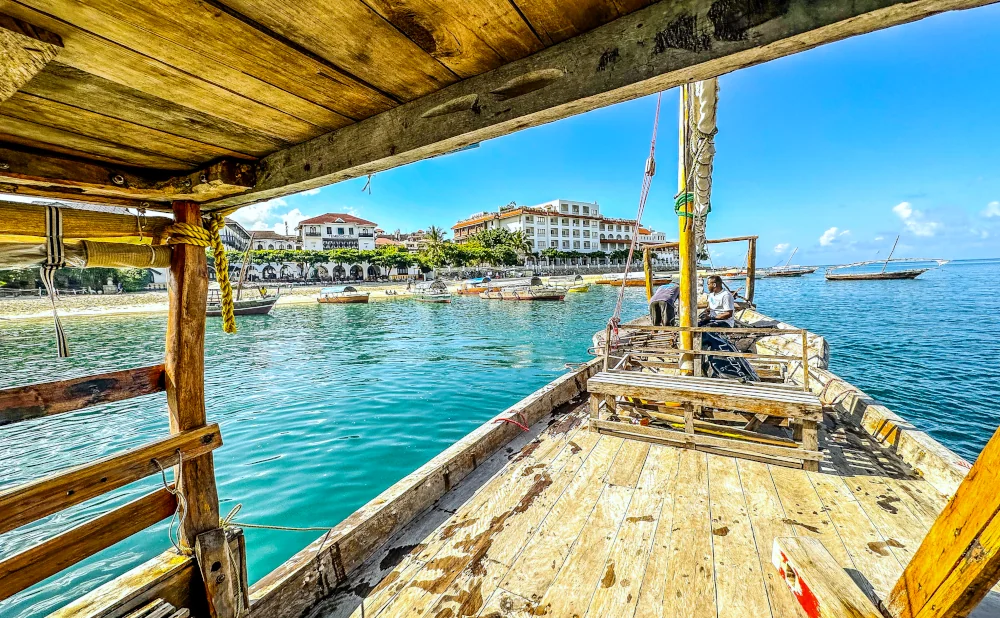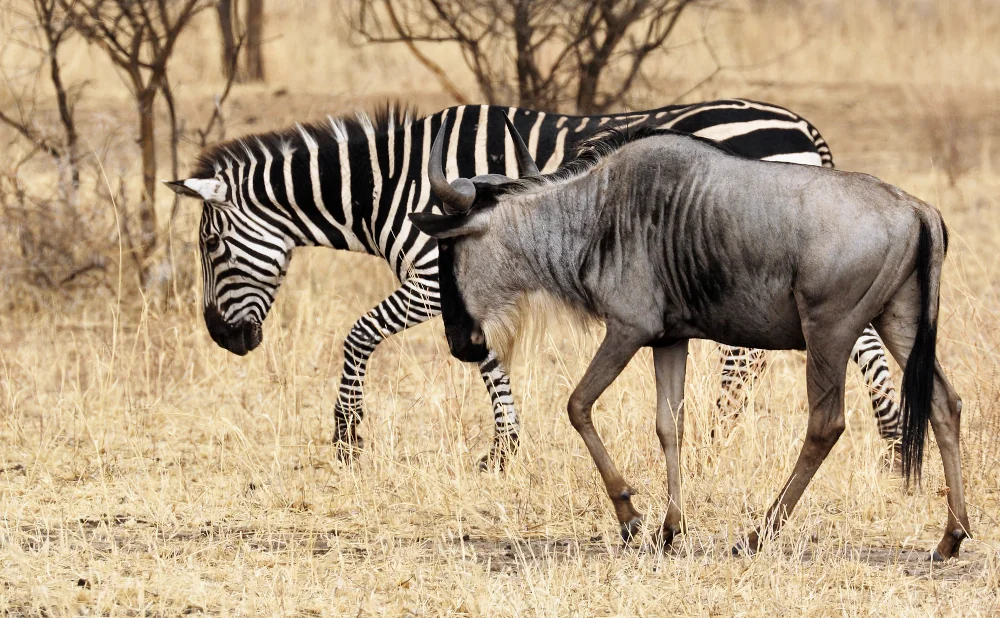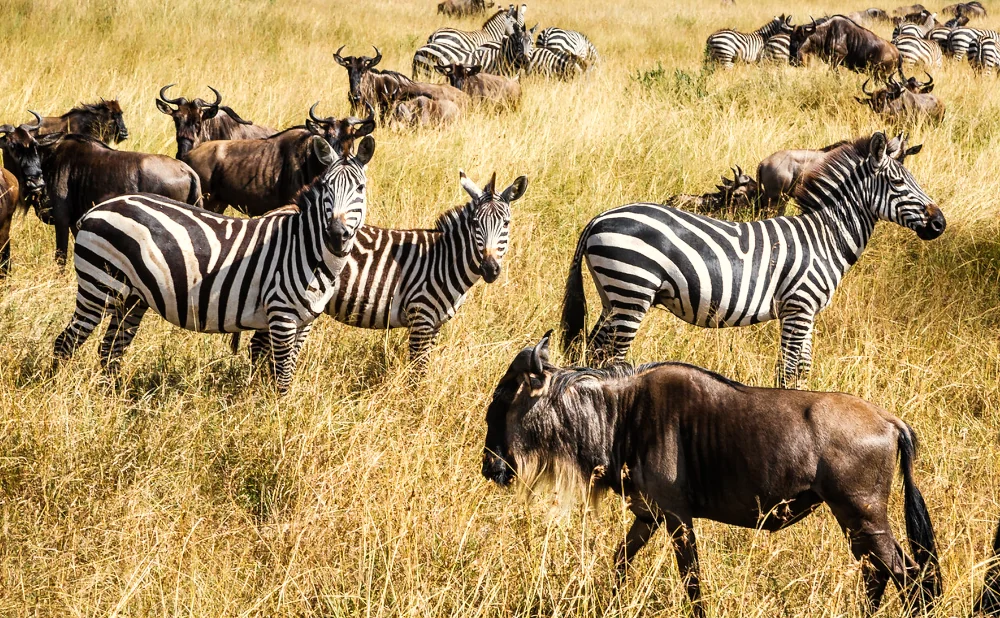Explore Wonderful trekking Rongai Route
The allure of Mount Kilimanjaro is undeniable.
Its snow-capped peak, standing tall against the Tanzanian sky, beckons adventurers from around the globe.
Among the many routes to its summit, the Rongai Route holds a unique charm.
This northern approach to Kilimanjaro is less crowded, offering a serene trekking experience. It's a journey that takes you through diverse landscapes, from lush rainforests to alpine deserts.
The Rongai Route is known for its gentle gradient. This makes it a favorable choice for beginners and those who prefer a gradual ascent.
But don't be fooled by its gentleness.
The route still offers a thrilling trekking adventure. It challenges you, tests your limits, and rewards you with breathtaking views.
From the Kenyan plains to the Mawenzi Peak, the vistas are nothing short of spectacular.
The trek also offers a unique opportunity to witness the diverse wildlife in the area. You might spot colobus monkeys, elephants, and a variety of bird species.
The Rongai Route is not just a trekking route. It's a journey into the heart of Africa's wilderness.
It's a chance to push your boundaries, to discover your strengths, and to experience the thrill of adventure.
In this guide, we'll take you through everything you need to know about trekking the Rongai Route. From preparation to the day-by-day itinerary, we've got you covered.
So, are you ready to embark on this wonderful trekking adventure? Let's explore the Rongai Route together.
Why Choose the Rongai Route for Your Kilimanjaro Trek?
The Rongai Route offers a unique trekking experience on Mount Kilimanjaro.
One of its main appeals is its tranquility. As the only route approaching Kilimanjaro from the north, it sees fewer crowds. This allows for a more serene and intimate experience with nature.
The route is also known for its gentle gradient and gradual ascent. This makes it a great choice for beginners or those who prefer a less strenuous climb. Despite its gentleness, the route still offers a thrilling adventure with stunning views and diverse landscapes.
The Rongai Route also boasts a high success rate. Its gradual slope and fewer steep climbs allow for better acclimatization, increasing the chances of reaching the summit.
Lastly, the Rongai Route offers a unique opportunity to witness the diverse wildlife of Kilimanjaro. From colobus monkeys to elephants, the route is a haven for nature lovers.
Choosing the Rongai Route for your Kilimanjaro trek means choosing a unique, serene, and rewarding adventure. It's a journey that will challenge you, inspire you, and leave you with unforgettable memories.
Preparing for Your Rongai Route Trekking Adventure
Preparation is key to a successful trek on the Rongai Route.
This involves physical training, gathering essential gear, and understanding health and safety considerations.
Physical training: This should start months in advance. It helps to build stamina and strength, especially in the legs and core.
Essential gear: This includes warm clothing, hiking boots, and a sleeping bag rated for cold temperatures.
Health and safety: Understanding the risks of altitude sickness and how to prevent it is crucial.
With proper preparation, you can ensure a safe and enjoyable trekking experience.
Physical Preparation and Training
Physical preparation is crucial for the Rongai Route trek.
The trek involves long days of walking, often on steep and uneven terrain. Therefore, it's important to build up your stamina and leg strength.
Training should ideally start at least two to three months before the trek. This can involve regular cardio exercises like running, cycling, or swimming, along with strength training exercises.
Essential Gear and Packing List
Packing the right gear is essential for your comfort and safety on the trek.
Here's a basic packing list for the Rongai Route trek:
Warm clothing: This includes thermal base layers, a fleece jacket, and a waterproof and windproof outer layer.
Hiking boots: Choose sturdy and waterproof boots that are well broken-in.
Sleeping bag: A sleeping bag rated for cold temperatures is essential, as night temperatures can drop below freezing.
Other essentials: These include a headlamp, trekking poles, water bottles, and personal medical kit.
Remember, it's important to pack light and only bring what's necessary.
Health, Safety, and Altitude Sickness
Health and safety are paramount on the Rongai Route trek.
One of the main health risks is altitude sickness. This can occur when you ascend too quickly and your body doesn't have enough time to adapt to the lower oxygen levels.
Symptoms can include headache, nausea, dizziness, and shortness of breath. To prevent altitude sickness, it's important to ascend slowly and take time to acclimatize.
It's also crucial to stay hydrated and eat well during the trek. This helps to maintain your energy levels and supports your body's adaptation to the altitude.
Lastly, always communicate with your guides about any health concerns. They are trained to monitor your health and ensure your safety throughout the trek.
Day-by-Day Rongai Route Itinerary
The Rongai Route trek typically takes 6 to 7 days.
This allows for proper acclimatization and increases your chances of reaching the summit. Here's a day-by-day breakdown of the trek.
Day 1: Arrival and First Steps
Your trek begins at the Rongai Gate.
The first day involves a gentle hike through the rainforest to the First Cave Camp. This is a great opportunity to spot wildlife and enjoy the lush scenery.
Day 2: Into the Wilderness
On the second day, you'll trek from First Cave to Kikelewa Cave.
The trail takes you through moorland, offering stunning views of Kibo and the Eastern ice fields on the crater rim.
Day 3: Ascending and Acclimatizing
Day 3 involves a short but steep climb to Mawenzi Tarn.
This is an acclimatization day, allowing your body to adjust to the altitude. The views of Mawenzi Peak are truly spectacular.
Day 4: Approaching the Alpine Desert
On the fourth day, you'll cross the lunar desert of the 'Saddle' between Mawenzi and Kibo.
Your camp for the night is at Kibo Hut, located at the bottom of the Kibo crater wall.
Summit Day: Reaching Uhuru Peak
Summit day is the most challenging but also the most rewarding.
You'll start your ascent to Uhuru Peak in the early hours of the morning. Reaching the summit as the sun rises over the African plains is an unforgettable experience.
Descent: The Journey Back Down
After reaching the summit, you'll begin your descent.
The trail takes you down to Horombo Hut for your final night on the mountain. The descent is a chance to reflect on your incredible achievement and enjoy the changing scenery.
Unique Features of the Rongai Route
The Rongai Route is known for its unique features.
One of these is its gentle gradient and gradual ascent, making it a favorable choice for beginners. It's also the only route that approaches Kilimanjaro from the north, offering a different perspective of the mountain.
The route passes through several distinct ecological zones. From rainforest to moorland to alpine desert, each zone offers its own unique scenery and challenges. This diversity is one of the reasons why the Rongai Route is so popular.
Another unique feature of the Rongai Route is its sense of untouched wilderness. It's less crowded than other routes, giving you a more serene and authentic trekking experience. The route also offers panoramic views of the Kenyan plains and Mawenzi Peak.
Flora and Fauna Along the Rongai Route
The Rongai Route offers a unique opportunity to witness the diverse wildlife in the area.
You might spot colobus monkeys, elephants, and various bird species. The flora is equally diverse, with each ecological zone hosting different plant species.
The rainforest zone is lush and green, with towering trees and vibrant undergrowth. As you ascend, the vegetation changes to heather and moorland, with giant lobelias and senecios dotting the landscape. The alpine desert zone is stark and beautiful, with its unique succulent plants.
Cultural Interactions and Local Communities
The Rongai Route also offers opportunities for cultural interactions.
You'll start your trek close to the Kenyan border, in an area inhabited by the Chagga people. These local communities are an integral part of the Kilimanjaro experience.
You might have the chance to visit a local village or school. This is a great opportunity to learn about the local culture and traditions. It's also a chance to give back, as these visits often support community projects.
Best Time to Trek and Weather Conditions
The best time to trek the Rongai Route is during the dry seasons.
These are from January to March and from June to October. During these months, the weather is generally clear and the trails are less muddy. This makes for a more comfortable and enjoyable trekking experience.
However, the Rongai Route is often recommended for those trekking during the rainy season. This is because it's located on the drier side of the mountain. Regardless of when you choose to trek, be prepared for a variety of weather conditions. From rain in the forest zone to strong sun and wind at higher altitudes, the weather on Kilimanjaro can be unpredictable. It's all part of the adventure.
Sustainable Trekking and Responsible Tourism
Trekking on the Rongai Route is not just about reaching the summit of Mount Kilimanjaro. It's also about respecting the mountain and its environment. As trekkers, we have a responsibility to minimize our impact and preserve this unique ecosystem for future generations.
This means following the Leave No Trace principles. These include disposing of waste properly, leaving what you find, and respecting wildlife. It's also important to be considerate of other visitors and the local communities that call this area home.
Moreover, choosing a trekking company that practices responsible tourism is crucial. This includes ensuring fair wages and good working conditions for their staff. It also means contributing to local economies and supporting conservation efforts. By making sustainable choices, we can all help to protect the incredible beauty and biodiversity of Mount Kilimanjaro.
Choosing the Right Trekking Agency
Selecting the right trekking agency for your Rongai Route adventure is a crucial step. It can significantly impact your overall experience and safety on the mountain. Look for a reputable company with experienced guides and a strong track record of successful treks.
Consider factors such as safety protocols, guide-to-client ratio, and the company's commitment to ethical practices. This includes fair wages and treatment of porters, who play a vital role in the success of your trek. Reading reviews and testimonials from previous clients can also provide valuable insights.
Remember, the cheapest option may not always be the best. Investing in a quality trekking agency can ensure a safer, more enjoyable, and more responsible trekking experience. After all, climbing Mount Kilimanjaro is a once-in-a-lifetime adventure, and it's worth doing it right.
After the Trek: Recovery and Reflection
After the exhilarating challenge of the Rongai Route trek, it's time for some well-deserved rest and reflection. Your body will need time to recover from the physical exertion, so consider spending a few days relaxing in Tanzania. There are plenty of beautiful locations to unwind, from the tranquil beaches of Zanzibar to the wildlife-rich national parks.
Reflect on your journey and the personal growth you've experienced. The trek is not just about reaching the summit, but also about the lessons learned, the friendships formed, and the memories created. It's a transformative experience that stays with you long after you've descended the mountain.
FAQs About Rongai Route Trekking
Q: How difficult is the Rongai Route? The Rongai Route is considered one of the easier routes on Kilimanjaro. Its gradual ascent and fewer steep climbs make it a favorable choice for beginners. However, it's still a challenging trek due to the high altitude.
Q: What is the success rate of the Rongai Route? The Rongai Route has a high success rate, largely due to its gradual slope and the fact that it allows for proper acclimatization. However, success can vary depending on individual fitness levels and weather conditions.
Q: How long does the trek take? The trek typically takes 6 to 7 days, depending on the specific itinerary. This includes time for acclimatization to the altitude.
Q: What wildlife can I see on the Rongai Route? The route offers a unique opportunity to witness diverse wildlife, including colobus monkeys and elephants, particularly in the lower forested sections.
Q: What is the best time to trek the Rongai Route? The best time to trek the Rongai Route is during the dry seasons, from January to March and from June to October. However, it can be trekked year-round.
Q: What gear do I need for the trek? Proper gear is essential for the trek. This includes warm clothing, hiking boots, a sleeping bag rated for cold temperatures, and other trekking essentials.
Q: How do I prepare for the trek? Physical fitness is crucial for the trek. It's recommended to start training several months in advance, focusing on cardio, strength, and endurance exercises.
Q: What are the risks of altitude sickness? Altitude sickness is a risk on any high-altitude trek. It's important to be aware of the symptoms and to take time for proper acclimatization.
Q: Can I do the trek solo? While it's technically possible, it's highly recommended to book the trek with a reputable company. They provide experienced guides, porters, and logistical support, ensuring a safer and more enjoyable experience.
Q: Why choose the Rongai Route over other routes? The Rongai Route offers a more serene and less crowded experience. It's known for its unique wildlife, stunning views, and a high success rate, making it a great choice for first-time Kilimanjaro climbers.
Conclusion: Embracing the Challenge of Rongai Route Trekking
Trekking the Rongai Route is more than just a physical challenge. It's a journey of self-discovery, pushing your boundaries, and immersing yourself in the stunning beauty of Mount Kilimanjaro. The sense of accomplishment upon reaching Uhuru Peak is unparalleled, making every step of the journey worth it.
Whether you're an experienced hiker or a novice adventurer, the Rongai Route offers a unique trekking experience. With its diverse landscapes, rich wildlife, and the chance to stand on the roof of Africa, it's an adventure that will leave you with memories to last a lifetime.
Plan Your Rongai Route Adventure Today
Are you ready to embark on the adventure of a lifetime? Start planning your Rongai Route trekking journey today. Embrace the challenge, enjoy the breathtaking scenery, and create unforgettable memories on the slopes of Mount Kilimanjaro. The mountain is calling, and it's time to answer.











